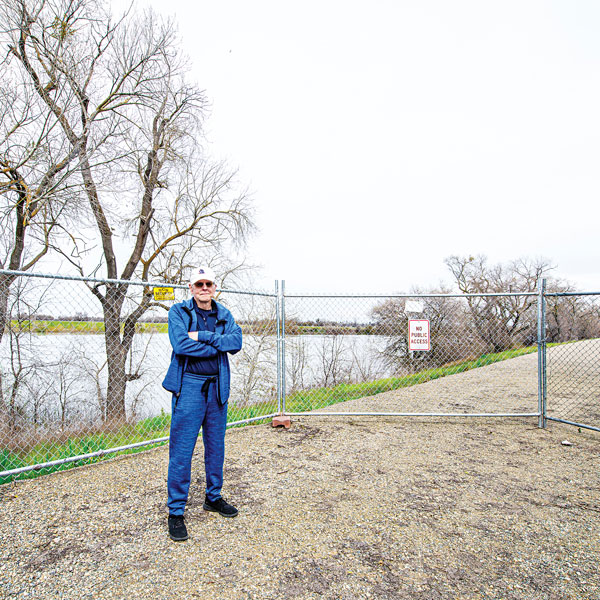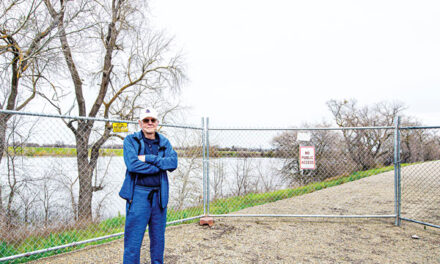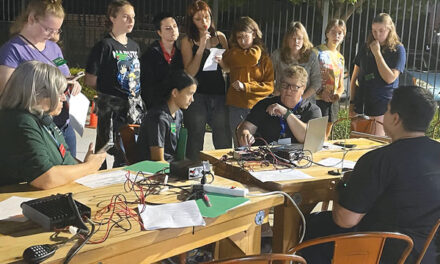My friend Jim Geary and I race to see who gets danced around more by the Central Valley Flood Protection Board. Jim has the lead, but I’m catching up.
For the past year, Jim and I separately asked the flood board for documents about levees and fences.
We want to know why flood board executive officer Chris Lief covertly authorized five temporary private fences to block public access on the Sacramento River levee in Pocket.
The authorizations appear to violate state law. California regulations require public hearings and votes by flood board members for any levee fence.

Lief authorized the chain-link barricades in secret. No hearing. No vote.
Jim and I believe flood board documents might explain how these seemingly illegal fences were approved.
There must be communications between flood board staff and residents near the levee who convinced Lief to break years of practice, ignore a flood board lawyer who opposed fences, reject warnings from experts that levee fences are hazardous, and disregard state regulations.
The law’s on our side.
The California Public Records Act, signed by Gov. Ronald Reagan in 1968, says, “Access to information concerning the conduct of the people’s business is a fundamental and necessary right of every person in this state.”
The California Supreme Court says, “In order to verify accountability, individuals must have access to government files.”
Timely production is required. Agencies must respond within 10 days (or 14 days in extreme cases). The law says, “The Public Records Act does not permit an agency to delay or obstruct the inspection or copying of public records.”
Which brings me to the public records request I made last Aug. 20.
I asked for meeting notes, emails and texts involving flood board staff and two Pocket residents, Mark Portuondo and Ryan Bogle, and a local attorney named Brian Manning.
Portuondo and Bogle lead a group of property owners near the river who want to fence off the levee and keep the public away. Manning is a diligent lawyer who works for the property owners.
I want to know what these three private citizens told the flood board’s public servants—and what flood board staff told the property owners.
Soon after my records request, a pleasant state official named Helen Riddle called to confirm my inquiry. I assumed the documents were on their way.
Then I received an email confirming the flood board and Department of Water Resources have the relevant communications but “these records may require a significant amount of time to locate, assemble and review.”
I was told the records would be ready in about three months, around Thanksgiving.
Thanksgiving came and went. Before Christmas, I got an email saying the records will arrive by April 5, almost eight months after my request.
In January, some documents showed up in my email inbox. Most were useless—agendas and transcripts from flood board meetings. Irrelevant junk I didn’t request.
Luckily, I received dozens of emails between private attorney Manning and Sarah Backus, staff lawyer for the flood board.
The emails show how Manning hoped the U.S. Army Corps of Engineers would deploy levee construction fences on behalf of private property owners. The Corps said no.
Some emails are obviously missing—referenced but not included in the data dumps.
It’s a start. A first step toward understanding why the flood board strayed from its public service mission, overlooked state law, endangered the levee with fences, and became a private security agency for a few property owners.
As for my friend Jim Geary, he made a request last July 24 for records about Lief’s authorization of those temporary fences. He received documents in December, much of the same stuff I got six weeks later.
The California Public Records Act doesn’t permit delays or obstructions in public document requests. But if Jim and I know anything, it’s that the Central Valley Flood Protection Board invents its own laws.
Manning didn’t respond to interview requests. Lief says temporary levee fences are “minor alterations,” thus legal.
R.E. Graswich can be reached at regraswich@icloud.com. Follow us on Facebook and Instagram: @insidesacramento.















